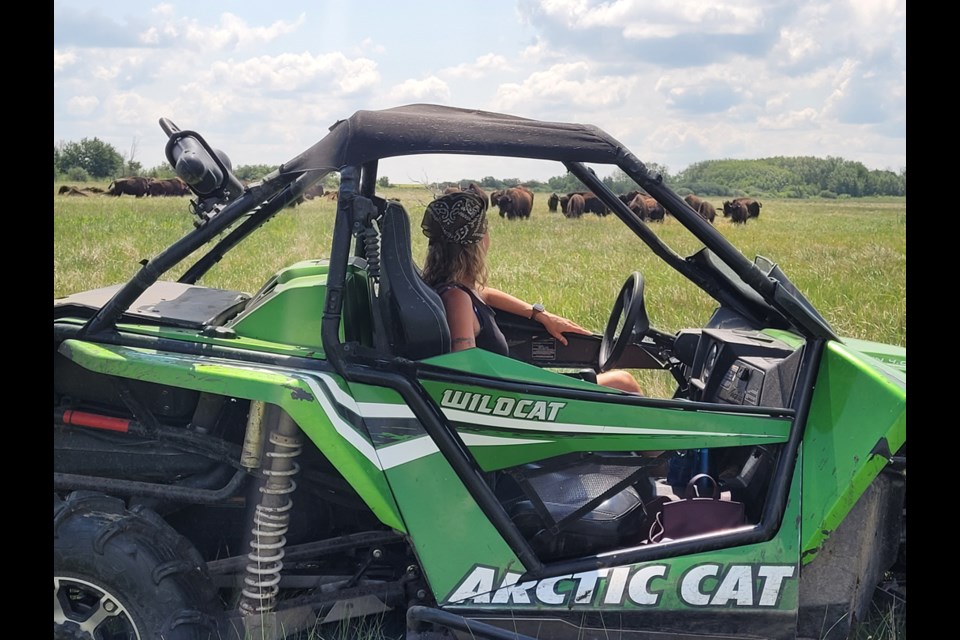MOOSE MOUNTAIN PROVINCIAL PARK — Nestled on a half section of land a short distance off the Wawota highway, on the edge of Moose Mountain Provincial Park, is where you will find the Rogers family. Dawn and Craig moved from the White Bear area in 1993. Raising their three children along with the typical farm cats and dogs, they expanded into the bison business in 1998.
Currently, there are more than100 bison majestically roaming the ranch with many caring for their calves. The bull calves are sold every couple of years and a new bull is purchased for genetics. The term “closed herd” describes Rogers’ Ranch because no other bison are brought in besides the new bull for genetics.
Bison are considered low maintenance, they free range all summer (hay fed in the winter) and they require no assistance with calving. They do like to walk the fence line daily so one task is keeping up with maintenance of the fences.
Bison is a lean source of protein, the hides are used traditionally for making drums, and in the 1930's, the RCMP and other Canadian police services, made coats to protect against the harsh winters (Wikipedia). Many indigenous communities have long held deep cultural and spiritual connections with bison. They have traditionally relied on bison for food, clothing, shelter, tools, fuel, and social and ceremonial purposes.
Rogers started out with bison for their own consumption with their meat butchered and wrapped at Moose Mountain Meats, with the hides sent to Winnipeg for tanning.
In 1998 the Rogers also ventured into the alpaca business.
Alpacas, also known as Lama Pacos, completes the “Sweet Dreams” portion of the Rogers’ Ranch. The ranch at one time was home to approximately 114 alpacas, but currently there are twelve females and eight males gracing the ranch. Besides attending alpaca shows, the fine animals are used for breeding and are usually sheared in May to sell the fleece.
It was only after a three-week trip to Peru in 2008 to study the Alpaca did Dawn come home and re-evaluate the herd. A group of eight people had traveled to Peru to attend alpaca shows, to study the breeding practices and learn how to process the fiber. The group learned how the Peruvians were educated in how to breed for both fineness and density. Fleece is measured in ‘Grades’ where the lower the number the finer the fleece. For example, a cria (baby alpaca) would be the lowest number (1) and would make a beautiful Italian suit and socks scoring at a higher level (4). The fleece is also used to make rugs, sweaters, scarves, duvets, mitts and felt. The possibilities are endless.
Alpaca fleece is considered to be an exotic fiber; in fact, in the 13th century only the king of the Inca Empire could wear an alpaca coat.
When Dawn returned from Peru, the herd was culled with the decision to start butchering for their own consumption while continuing to ship the fleece to a fiber mill in Ontario. Alpacas, like the bison, are fairly low maintenance. They stay pregnant for close to a year and an interesting tidbit is that they always give birth in the morning before it gets hot out.
Running the ranch is a constant commitment for Dawn and Craig Rogers and they are appreciative of residing in the southeast corner of the province as ‘their home on the range’.



